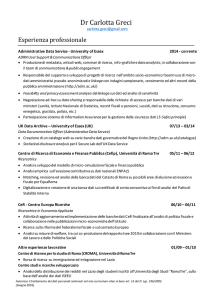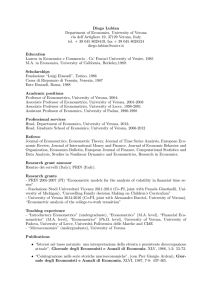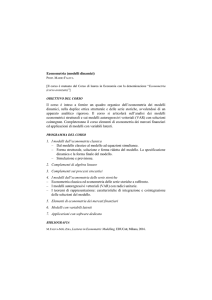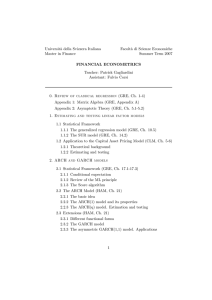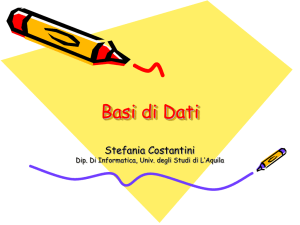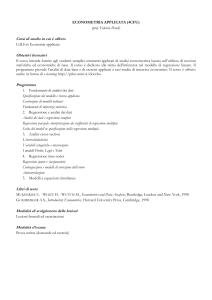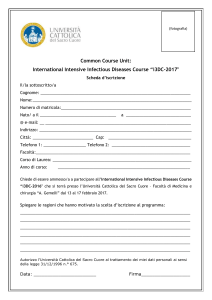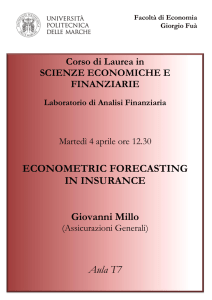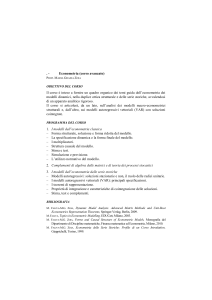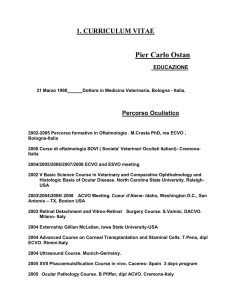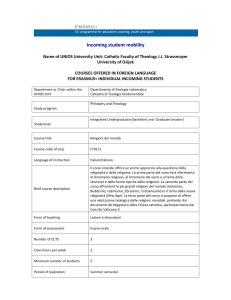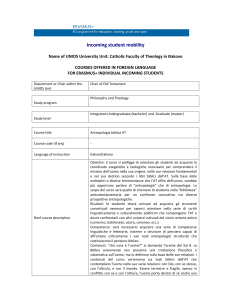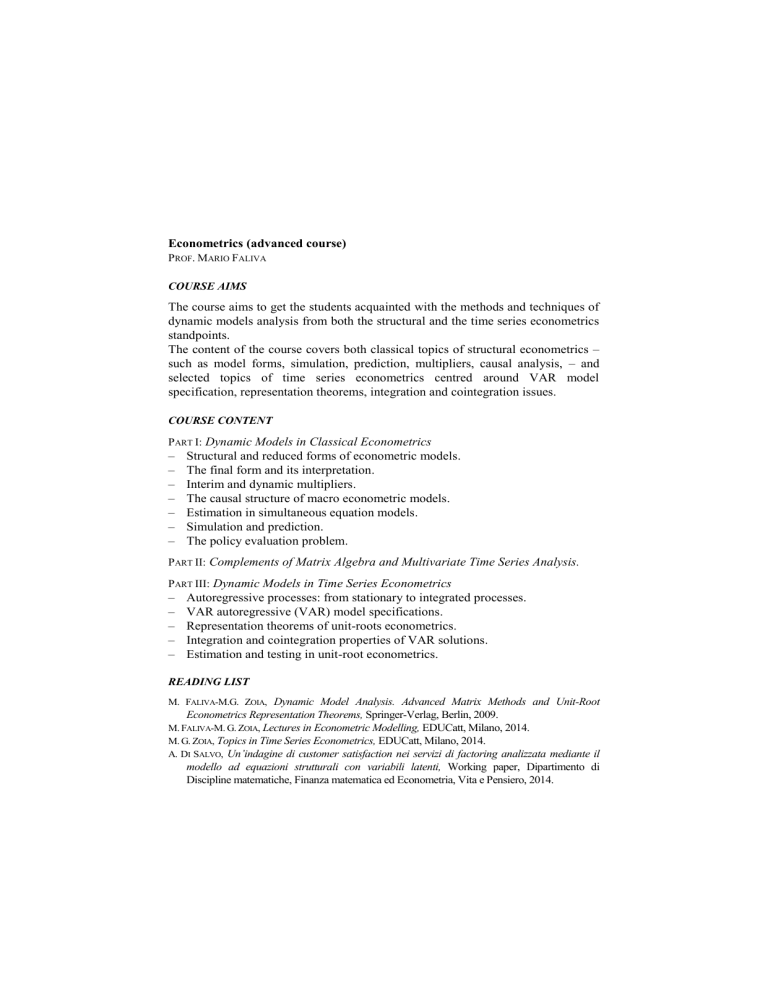
Econometrics (advanced course)
PROF. MARIO FALIVA
COURSE AIMS
The course aims to get the students acquainted with the methods and techniques of
dynamic models analysis from both the structural and the time series econometrics
standpoints.
The content of the course covers both classical topics of structural econometrics –
such as model forms, simulation, prediction, multipliers, causal analysis, – and
selected topics of time series econometrics centred around VAR model
specification, representation theorems, integration and cointegration issues.
COURSE CONTENT
PART I: Dynamic Models in Classical Econometrics
–
–
–
–
–
–
–
Structural and reduced forms of econometric models.
The final form and its interpretation.
Interim and dynamic multipliers.
The causal structure of macro econometric models.
Estimation in simultaneous equation models.
Simulation and prediction.
The policy evaluation problem.
PART II: Complements of Matrix Algebra and Multivariate Time Series Analysis.
PART III: Dynamic Models in Time Series Econometrics
–
–
–
–
–
Autoregressive processes: from stationary to integrated processes.
VAR autoregressive (VAR) model specifications.
Representation theorems of unit-roots econometrics.
Integration and cointegration properties of VAR solutions.
Estimation and testing in unit-root econometrics.
READING LIST
M. FALIVA-M.G. ZOIA, Dynamic Model Analysis. Advanced Matrix Methods and Unit-Root
Econometrics Representation Theorems, Springer-Verlag, Berlin, 2009.
M. FALIVA-M. G. ZOIA, Lectures in Econometric Modelling, EDUCatt, Milano, 2014.
M. G. ZOIA, Topics in Time Series Econometrics, EDUCatt, Milano, 2014.
A. DI SALVO, Un’indagine di customer satisfaction nei servizi di factoring analizzata mediante il
modello ad equazioni strutturali con variabili latenti, Working paper, Dipartimento di
Discipline matematiche, Finanza matematica ed Econometria, Vita e Pensiero, 2014.
Further indication about the reading list will be provide throught the lectures.
TEACHING METHOD
Lectures and thematic seminars.
ASSESSMENT METHOD
Final exam: a written test followed, possibly by an oral exam.
NOTES
Further information can be found on the lecturer's webpage at
http://docenti.unicatt.it/web/searchByName.do?language=ENG or on the Faculty notice
board.

